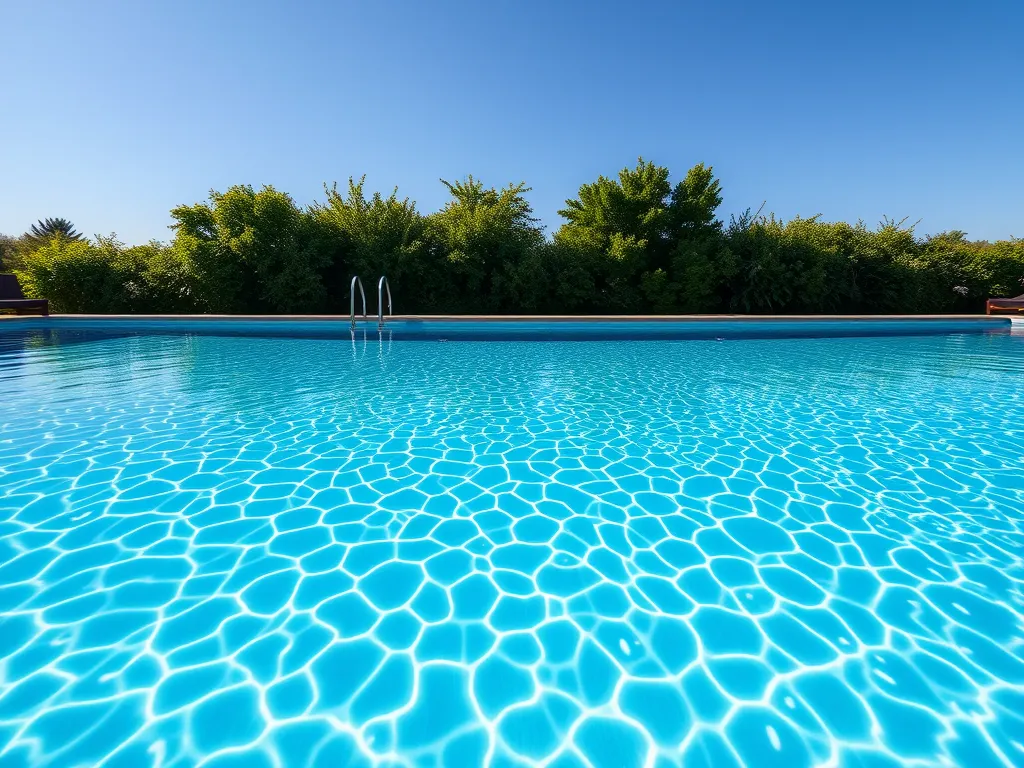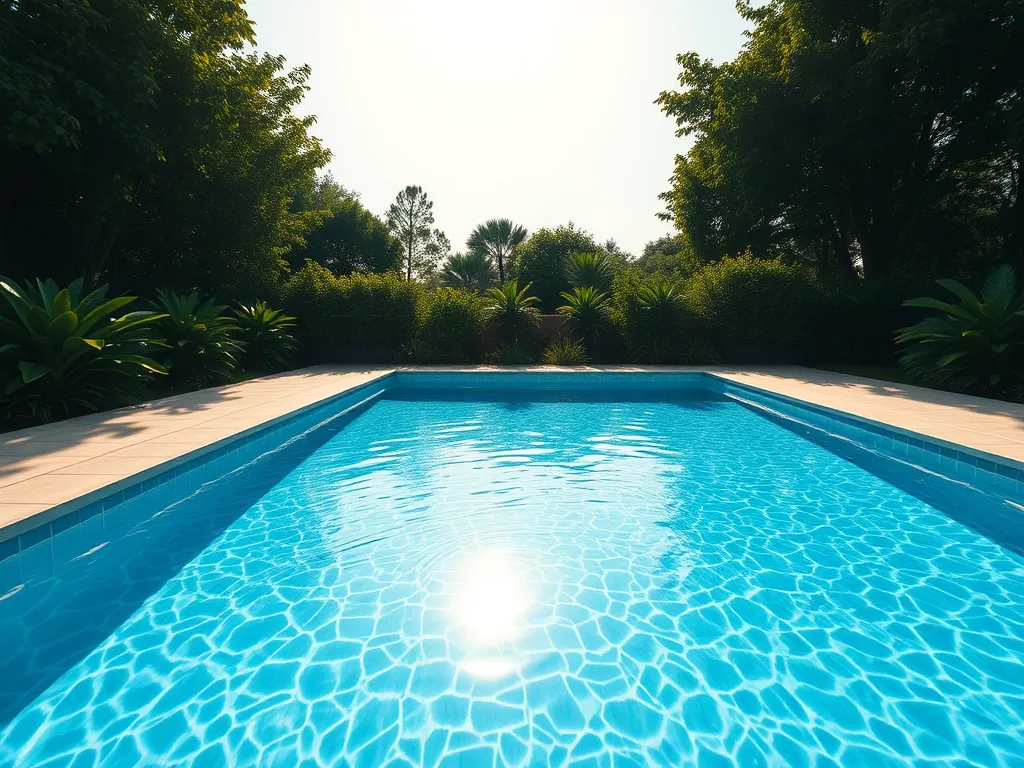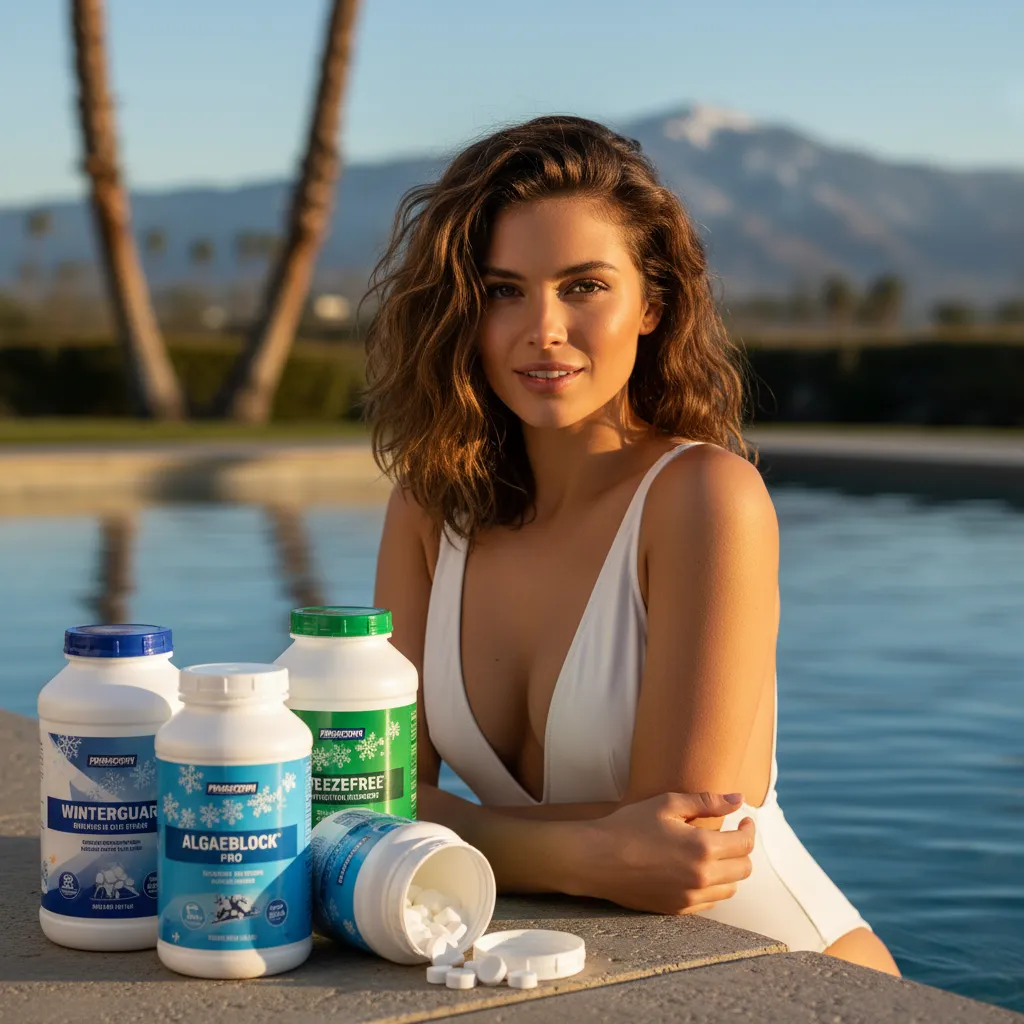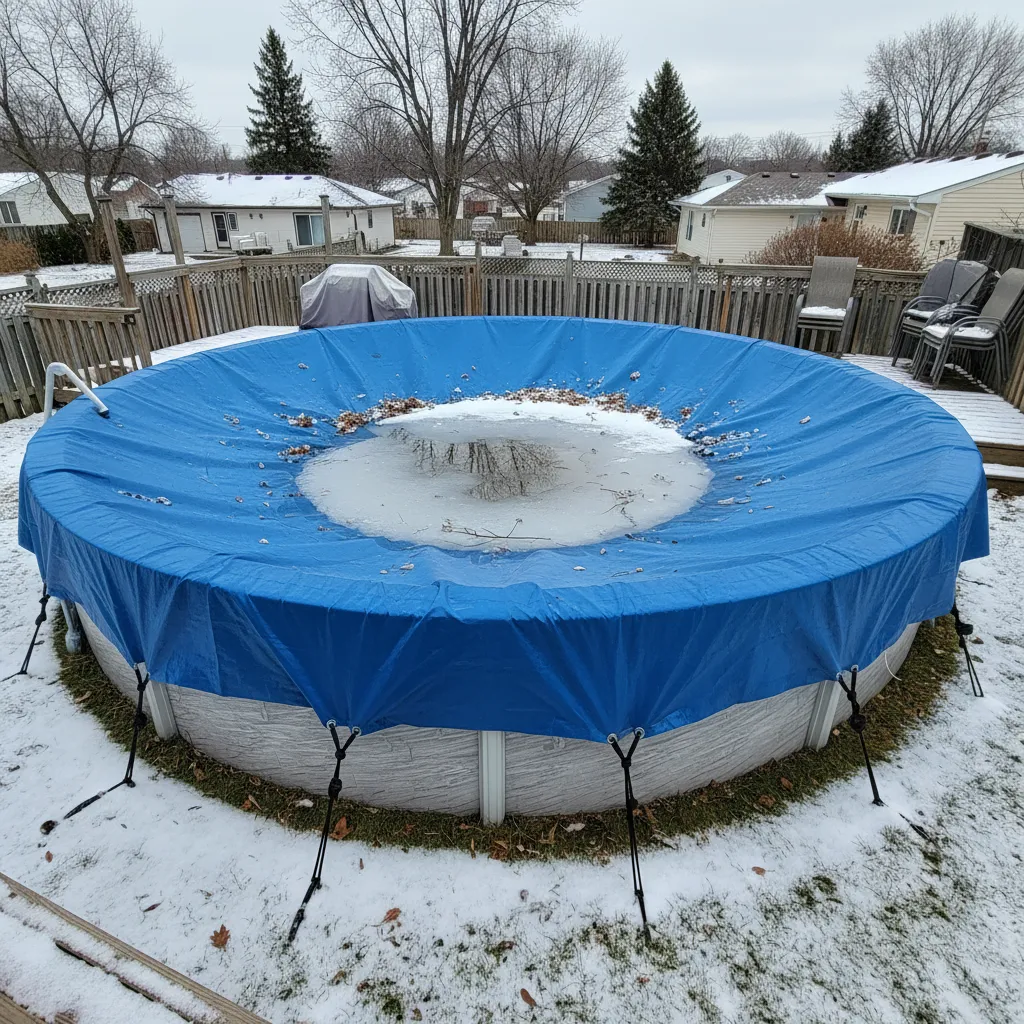Kidney Pool Volume Calculator
Published on: April 11, 2025 | Last Updated: April 13, 2025
Written By: Rachael Weatherbottom
A kidney pool volume calculator helps pool owners estimate water capacity. This calculation is vital for proper chemical treatment and maintenance. Our easy tool uses simple measurements to give quick results in gallons and liters. Learn how to measure your pool and calculate volume in 3 simple steps.
Pool Volume Calculator
How to Use
- Measure your pool’s longest length
- Measure the widest part of the pool
- Calculate average depth: (shallow end + deep end)/2
Factors Influencing Kidney Pool Volume Calculations
Accurately determining the volume of a kidney-shaped pool requires accounting for several variables. Unlike geometric pools, kidney designs feature asymmetrical curves and depth gradients that complicate measurements. Three primary factors impact calculations. When considering pool designs, it’s also important to know how to calculate the volume of circular pools. A circular pool volume calculator can help you easily find out how much water your round pool can hold.
Crucial Winterizing Products
"The all-in-one solution for a guaranteed clear spring opening."
All-in-One Closing Chemical Kit
Winter demand is high - check stock
"The 'set & forget' option. This is the easiest winterizing I've ever done."
Simple 3-in-1 Winterizing Balls
Winter demand is high - check stock
"Invest once to protect your liner and prevent a swamp in the spring."
Heavy-Duty Winter Pool Cover
Winter demand is high - check stock
Shape Complexity
Kidney pools mimic the organic contours of a human kidney, with a rounded end and a concave indentation. This curvature demands specialized formulas instead of standard rectangular equations. The radius of the “kidney” lobes and the angle of the central notch directly influence water capacity. For example, a pool with a 12-foot-wide notch holds 15-20% less water than one with an 8-foot notch, assuming identical length and depth.
Depth Variability
Most kidney pools slope from shallow (3 feet) to deep ends (8 feet). This gradient requires calculating average depth. Measure the deepest and shallowest points, then divide by two. Pools with non-linear slopes—such as sudden drop-offs or multi-tiered designs—need segmented measurements. A pool with a 3-foot shallow zone, 5-foot transition, and 8-foot deep end has an average depth of 5.3 feet.
Built-in Features
Steps, benches, and tanning ledges displace water, reducing total volume. A 6-foot-long bench in a 15×30-foot kidney pool can decrease capacity by 200-300 gallons. Similarly, attached spas or infinity edges require separate calculations. Always subtract the volume of these features after computing the main pool’s capacity.
Kidney Pool Volume Formulas and Equations
The standard formula for kidney pools approximates their shape using a combination of circular and elliptical segments. Here’s the step-by-step breakdown:
- Measure Length and Width: Record the longest distance between two ends (length) and the widest span across the “lobes” (width).
- Calculate Surface Area: Use the equation Surface Area = (0.45 × Length × Width) + (π × (Width/2)²/4). This blends elliptical and circular area estimates.
- Determine Average Depth: Average Depth = (Shallow End Depth + Deep End Depth)/2.
- Compute Volume: Total Volume (gallons) = Surface Area × Average Depth × 7.48.
| Pool Size | Length (ft) | Width (ft) | Average Depth (ft) | Volume (gallons) |
|---|---|---|---|---|
| Small | 24 | 12 | 4.5 | 12,100 |
| Medium | 30 | 15 | 5.0 | 20,300 |
| Large | 40 | 20 | 6.0 | 43,500 |
Advanced Techniques
For irregular designs, integration-based methods or 3D modeling software like AutoCAD or Pool Studio provide precise results. These tools divide the pool into infinitesimal segments, compute each volume, and sum them. However, they require technical expertise and are typically used by engineers. If you’re looking for an easier way to determine pool volume, a pool volume calculator can help. It simplifies the process, allowing anyone to get accurate measurements quickly.
Also See: Pump Run Time Calculator: Optimize Your Pump’s Time

Hydrostatic Pressure and Volume Relationships
Water volume directly affects hydrostatic pressure, which increases by 0.43 psi per foot of depth. A kidney pool holding 25,000 gallons with an 8-foot deep end exerts 3.44 psi at the bottom. This pressure impacts:
Proper pool pump pressure is vital for ensuring clean and clear water.
- Structural Integrity: High-pressure zones require reinforced walls and thicker vinyl liners (28-32 mil).
- Pump Efficiency: Larger volumes demand higher horsepower pumps. A 25,000-gallon pool needs a 1.5 HP pump with a 60 GPM flow rate.
- Chemical Distribution: Pressure gradients influence chlorine dispersal. Dead zones near concave curves may require additional jets.
Practical Applications Of Accurate Volume Data
Precise volume calculations optimize maintenance and operational efficiency. Key applications include:
Chemical Dosage
Chlorine, algaecides, and pH adjusters are dosed per 10,000 gallons. Underestimating a 20,000-gallon pool by 15% leads to a 3 ppm chlorine deficit, risking algae blooms.
Heater Sizing
Gas heaters require 100,000 BTUs per 15,000 gallons. A 30,000-gallon kidney pool needs a 200,000 BTU heater to raise temperature by 1.5°F per hour.
Filter Runtime
Total volume dictates daily turnover rates. The formula Runtime (hours) = Volume / (Flow Rate × 60) determines pump operation. For example, a 20,000-gallon pool with a 50 GPM pump needs 6.67 hours to cycle all water. Knowing how long to run your pump is essential for effective pool maintenance. A pool pump run time calculator can help you find the right runtime based on your pool’s size and pump efficiency.
FAQs: Kidney Pool Volume Concerns
Why Do Seasonal Temperatures Affect Volume?
Water density changes with temperature. A 70°F to 90°F increase expands volume by 2%, adding 400 gallons to a 20,000-gallon pool. Winterizing requires lowering levels by 4-6 inches, reducing volume by 1,200-1,800 gallons. However, it is possible to winterize your pool without completely draining it. This method helps to protect your pool from freeze damage while maintaining its water level.
How Do Built-in Features Impact Calculations?
Features displace water:
- Steps: Subtract 150-300 gallons
- Spas: Subtract 500-800 gallons
- Bubblers: Subtract 50-100 gallons each
Can Incorrect Volume Damage Equipment?
Undersized pumps overwork motors, reducing lifespan by 30-40%. Oversized filters fail to trap fine debris, causing cloudiness. Always cross-reference volume with manufacturer specs. In addition to pump size, excessive water can lead to serious damage in systems. If a pump is overwhelmed by too much water, it can fail to operate effectively, leading to costly repairs.
Special Cases in Volume Measurement
Infinity Edge Pools
The catch basin volume must be added to the main pool. A 30×15-foot kidney pool with a 4×6-foot basin holds an extra 1,100-1,400 gallons.
Saltwater Vs. Freshwater
Saltwater is denser (8.6 lbs/gallon vs. 8.34 lbs/gallon). While volume remains identical, chemical adjustments differ. Salt systems require 3,000-4,000 ppm salinity, calculated as Pounds of Salt = Volume × 8.6 × Target Salinity (ppm)/1,000,000. Converting a pool to saltwater can provide a more pleasant swimming experience. It’s essential to know how to adjust the salinity for optimal results.
| Feature | Volume Adjustment |
|---|---|
| Attached Spa | +500-800 gallons |
| Tanning Ledge | +200-400 gallons |
| Waterfall | +100-300 gallons |

Integrating Volume With Other Pool Metrics
Volume interacts with flow rate, turnover time, and filter size. Use these formulas:
- Turnover Time: Total Volume (gallons) / Flow Rate (GPM) / 60
- Filter Size: Total Volume (gallons) / 100 = Minimum Filter Area (sq. ft)
- Heater BTU: Volume (gallons) × 8.33 × Temperature Rise (°F) / 24 = BTU/hr
For detailed computations, explore tools on My Pool Calculator.
Common Measurement Errors and Fixes
Assuming Symmetry
Never presume both kidney lobes are identical. Measure each curve separately using a flexible tape.
Ignoring Slope
Linear depth averages fail in pools with abrupt slopes. Divide the pool into 3-4 horizontal sections and calculate each volume individually.
Overlooking Water Displacement
Swimmers displace 7-10 gallons each. A pool party with 20 guests reduces effective volume by 140-200 gallons, altering chemical efficacy.
Advanced Tools for Precision
Professional pool technicians use:
- Laser Scanners: Create 3D maps accurate to ±0.25%.
- Dye Testing: Inject fluorescein dye to track circulation and identify dead zones.
- Pressure Sensors: Measure hydrostatic pressure at multiple depths to back-calculate volume.
Adjusting for Seasonal Changes
Water volume fluctuates with temperature and usage. Implement these adjustments:
| Season | Volume Change | Maintenance Action |
|---|---|---|
| Summer | +2-3% | Increase chlorine by 0.5 ppm |
| Winter | -5-8% | Lower alkalinity by 10 ppm |
For personalized recommendations, visit My Pool Calculator.
Additional Resources for You:
- CDC – Healthy Swimming & Pool Safety Guidelines
- Pool Volume Calculator | Good Calculators
- Kidney Pool Volume Calculator | Poolbots
- Pool Volume Calculator – Find Pool Size in Gallons – Inch Calculator
- Pool Volume Calculator | Pool Maintenance | Swimmingpool.com
A pool care geek who’s been testing water chemistry since she was tall enough to reach the skimmer.
Pool Calculators, Pool Volume





